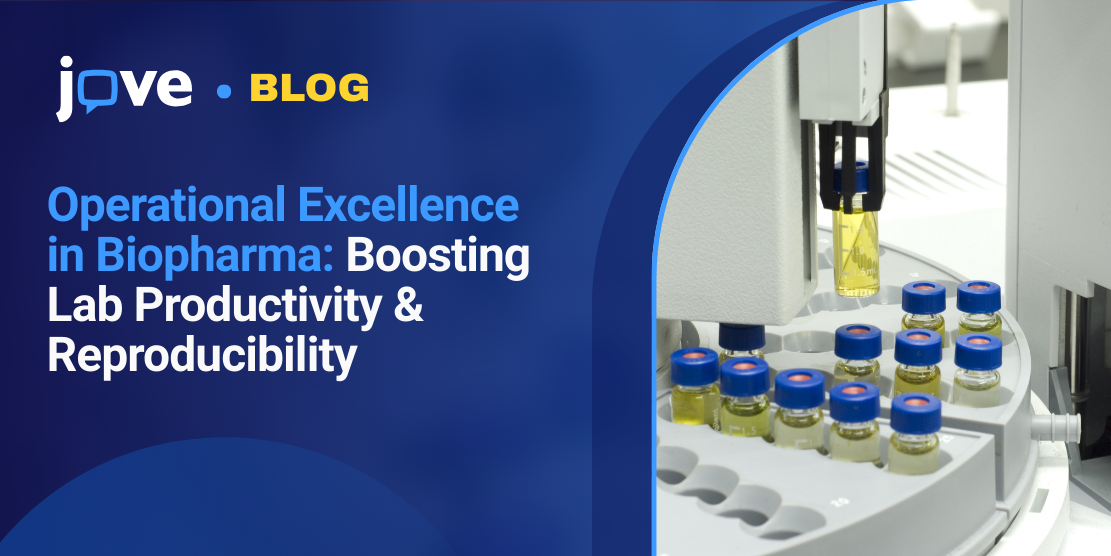Irreproducible research is costing the biopharma industry billions. A landmark 2015 study estimated that $28 billion is lost each year in preclinical studies in the United States.1 With R&D spending only growing, a more recent analysis suggests losses may exceed $40 billion annually in the US and almost $90 billion worldwide.2
These numbers aren’t abstract; they reflect daily challenges in biopharma labs. A Nature survey of more than 1,500 scientists confirmed that most have struggled to reproduce peers’ experiments, with direct consequences for time, cost, and credibility.3
For biopharma R&D scientists working to improve real lives, reproducibility isn't just a scientific ideal or a box-ticking exercise. It’s the foundation of productivity, efficiency, and trust in scientific results.
Where Labs Lose Time and Resources
Even with major investments in technology, everyday bottlenecks continue to slow research. Inefficient or inconsistent workflows can delay drug discovery, increase costs, and jeopardize compliance.
One of the biggest hurdles is variability in protocols, with teams across sites often performing the same procedure differently. When experiments fail, labs lose valuable time and resources repeating work that could have been avoided with clearer, more consistent practices.
Poor recordkeeping adds another layer of difficulty. Manual data entry, incomplete logs, and missing audit trails weaken both reliability and compliance.4 These challenges are further compounded by staff turnover. New hires take time to train, and knowledge gaps often lead to inconsistencies.
In animal research, inconsistent study design and reporting are common. The ARRIVE 2.0 guidelines,5 developed by the NC3Rs and endorsed by many journals and funders, aim to improve transparency and reproducibility by standardizing how in vivo studies are reported. Yet adoption remains uneven, and productivity continues to be lost to preventable mistakes and variations.
Skills and Practices That Enhance Productivity
Productivity grows when best practices are embedded into everyday lab operations. The following skills and habits consistently make the difference between smooth workflows and expensive setbacks:
- 🔶
Careful adherence to SOPs and standardized sample handling - 🔶 Proper instrument qualification and calibration
- 🔶 Good documentation practices following the ALCOA+ principles for data integrity4
- 🔶 Risk-based quality controls to prioritize the highest-impact steps in a workflow
- 🔶 Pre-registration or internal peer review of protocols before scaling studies to catch potential issues
- 🔶 Ongoing training and refreshers to maintain researcher competence and research quality
These practices are not only about meeting compliance requirements. They directly improve efficiency, reduce errors, and help research teams get reliable results faster, while strengthening operational efficiency in biopharma R&D.
Workflow Optimization in Practice
Here are a few ways labs can apply workflow optimization in real-world settings:
1. Visual SOPs for complex procedures
In vivo studies often involve delicate tasks like surgical prep, dosing, and endpoint measurements, where even small deviations can impact findings. Video protocols ensure everyone performs these steps consistently, showing details that written SOPs often leave out.
2. Lean lab practices to prevent reruns
This approach reflects the principles of lean laboratories, which emphasize eliminating unnecessary steps, smoothing workflows, and improving overall efficiency.6 This way, labs can avoid mix-ups, reduce repeat studies, and make better use of resources. The approach works by limiting the number of studies run at once and keeping workflows consistent.
3. Endpoint assessment standardization
Endpoints like tumor measurements or behavioral scoring are prone to subjective interpretation. Visual protocols can help standardize how these are evaluated, minimizing errors and variability.
4. Training and knowledge transfer
Critical knowledge can be lost when staff leave or projects change. Short video modules in onboarding and refreshers maintain standards and pass expertise to new researchers.
In the video below, a streamlined protocol shows how automation and miniaturization support efficient and reproducible organoid culture and imaging.
Key Takeaways
The scale of irreproducibility—tens of billions lost each year—is a reminder that biopharma R&D cannot afford inefficiency. Productivity in pharmaceutical research labs is inseparable from reproducibility: when methods are clear, consistent, and transferable, labs save time, reduce errors, and build credibility with regulators, collaborators, and patients alike.
One of the clearest solutions is the use of visualized protocols, which reduce ambiguity by showing every intricate detail and standardizing practice. As Dr. Raja Sriperumbudur, Director of the In-Vivo Resource Center at Biogen, explains: “JoVE videos are great training tools and serve as visual standard operating procedures in my lab. JoVE protocols give you extensive details on even what gauge needle was used. They are easy to reproduce because you have all the information, down to reagents.”
Clear methods and efficient operations drive productivity in pharmaceutical research labs, reducing setbacks in the lab and accelerating the path from discovery to patient-ready treatments.
Many labs are exploring video protocols to support productivity and knowledge transfer.
See how JoVE’s resources can help your team.
- Freedman, L. P., Cockburn, I. M., & Simcoe, T. S. (2015). The economics of reproducibility in preclinical research. PLOS Biology, 13(6), e1002165. https://doi.org/10.1371/journal.pbio.1002165
- Bio-Rad Laboratories. (n.d.). Are costly experimental failures causing a reproducibility crisis? Insights and trends. Bio-Rad. https://www.bio-rad.com/en-za/applications-technologies/are-costly-experimental-failures-causing-reproducibility-crisis?ID=4ab22faf-bef3-cf71-fb92-2d603980d393
- Baker, M. (2016). 1,500 scientists lift the lid on reproducibility. Nature, 533(7604), 452–454. https://doi.org/10.1038/533452a
- Food and Drug Administration. (2018). Data integrity and compliance with drug CGMP: Questions and answers guidance for industry. U.S. Food & Drug Administration. https://www.fda.gov/media/119267/download
- Percie du Sert, N., Hurst, V., Ahluwalia, A., et al. (2020). The ARRIVE guidelines 2.0: Updated guidelines for reporting animal research. PLOS Biology, 18(7), e3000410. https://doi.org/10.1371/journal.pbio.3000410
- Cherie, N., Berta, D. M., Smith, J., et al. (2024). Improving laboratory turnaround times in clinical settings: A systematic review of the impact of lean methodology application. PLOS ONE, 19(10), e0312033. https://doi.org/10.1371/journal.pone.0312033


.gif?width=994&height=550&name=JoVE%20gif%204%20(1).gif)

